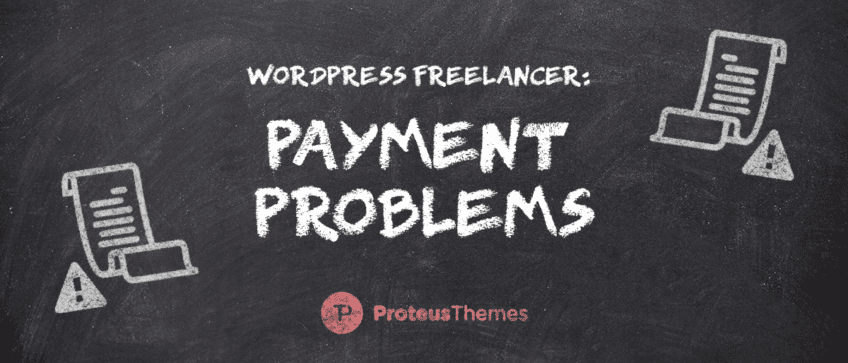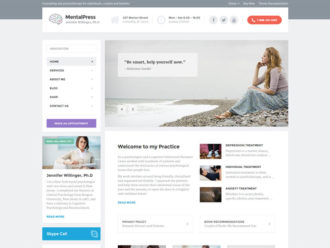Whether it is down to your client’s inefficient systems, or if they are deliberately withholding your money, late payment is an issue that just about every freelancer will encounter. Being the little guy is tough, especially when it comes to getting what you are owed by a larger company.
According to this article in Fortune Magazine:
One recent study of self-employed people in New York state, for instance, found that 316,000 of them (about 35%) were paid late at least once during the preceding year, and some 214,000 (14%) did work for one or more clients who never paid them at all. Total lost wages in the Empire State alone, over a 12-month span: More than $3 billion.
Our article will go through some of the preventative measures you can take to avoid a late or non-payment situation. We will also look at some of the strategies you can use if you are already encountering one. Of course laws differ from country to country, but there are some general measures that every freelancer can take to safeguard themselves from payment issues.
I asked Matija Raos – President of the Croatian Independent Professionals Association – what measures he takes as a WordPress professional to avoid payment problems:
‘If we do not sign a contract, there is no project. Explain this to your potential clients from the start.
It’s imperative you agree on the scope of the work and an approximation of the time needed to execute it. This should be clearly stated in the contract along with the deadlines both for the deliveries and payment instalments.
(Depending on the situation) You have to discuss with the client the direct cost, and demand they pay it upfront along with 30-40% fee so that you’re sure they are “legit”. Usually direct costs are related to setting the domain, hosting, mail accounts, premium theme and plugins, and sometimes the pool of visuals or web fonts. Before you buy anything your client needs to confirm it.
When you draft a raw version of the website which you will show to the client (depending on your workflow; project midterm) this is a good time to request a second instalment of 30% and also evaluate if you are inline with your initial projection of the project hours (agreed in the contract).
Lastly, before the project wrap-up (last corrections) and publishing the page, request your last instalment of 30-40%.
If you already found yourself in a non-payment situation and there is no hope, as a last resort communicate clearly to the client you will shut down the website and instead of an under-construction page publish a “client didn’t pay me – don’t work with him” page’.
You too can avoid payment problems by taking all of these points into consideration:
Who is your client?
It seems like an obvious question to ask, but it is still a very important one. If possible, do a little bit of snooping on your client. Of course this shouldn’t be the only preventative measure you take, it is far from a watertight plan. But if they have no record of existence, or just somehow seem like they could be a little shady – follow your intuition – the project might be one to pass on.
Your contract:
This is where you can really prevent problems. A lot of freelancers don’t even bother with contracts, this is irresponsible, no contract ultimately means no leg to stand on. You should always have a contract and there are a few certainties it should include:
Your rates. Be very clear about how much you will charge for the project. If you’re setting an hourly rate, you can avoid later dispute by setting a lower and upper time limit to the project. By doing so, you can be sure that you get what you deserve if you finish earlier than expected and your client wants to pay you less.
Payment Schedule. Ensure that your client is in complete agreement with your payment schedule. There are obviously various schedules you can choose, but the purpose of this is that it should essentially function as a deposit. Your schedule might look something like 30% up front, 50% on delivering the first draft and 20% on absolute completion. Whichever way you decide to structure it, it is always wise to get something up front.
Cancellation Fee. Sometimes known as a Kill Fee, this will cover you in case a client decides for some reason to stop the project. Some freelancers charge a flat rate fee of 50% of the total. Others will base it on how long they have been working for. Do whatever seems fair to you, but make sure you include this in your contract.
Revisions. A client who wants an unreasonable amount of revisions without paying for them is basically a shoplifter. Sate in your contract the amount of free revisions that you are comfortable with and a clear pricing guideline for those thereafter.
Late Payment Fee. This will always encourage a client to pay on time. It doesn’t even have to be a huge penalty fee. The notion of paying a 2% addition to your original invoice for each month of non-payment will likely light a fire under their chair.
We found some great template contracts made especially for web designers here:
Dealing with late payment
Even if you have all of the above in your contract, sometimes late payment just happens anyway. The moment your payment is overdue, the first step is a polite email. Just see it as a friendly reminder. You completed your work on time, and this is a little nudge in the right direction.
If they haven’t replied to your email after a few days, make a telephone inquiry. Put them on the spot (politely, of course). This is far more likely to end up with paymet than sending another email they can choose to ignore.
They heard your call and were very polite, but your payment is now a month late. This is the time to send your new invoice with the late payment fee included. It depends on how you invoice, but this one should be sent with a cover note/email to explain the increase and that you will continue to increase for as long as it takes them to pay.
If your client still won’t pay after a couple of late fee invoices, start playing hardball. Social shaming is one (ugly) road you can go down. If this is a company / client that really cares about their image, you can post some well-worded messages on their social media accounts. This is a little bit of a shady move, but so is not paying what you owe.
Your next step is really a matter of how far you are willing to go. You can send your client a bluff notice that you are consulting with a lawyer, and that they have suggested you give them a last chance to pay before legal proceedings begin. Alternatively, you can actually call a lawyer who will take them to court. Bear in mind that this is an expensive and stressful road to go down. If it is a huge sum of money, it may be worth it. If it isn’t so much, maybe just chalk the whole thing down to experience.
Liked this article? Check out WordPress Freelancer: How Much Should I Charge.





















